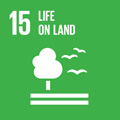- Docente: Barbara Lanzoni
- Credits: 6
- SSD: FIS/05
- Language: Italian
- Teaching Mode: Traditional lectures
- Campus: Bologna
- Corso: First cycle degree programme (L) in Physics (cod. 9244)
-
from Sep 20, 2023 to Dec 22, 2023
Learning outcomes
The aim is to obtain a general understanding of the most important stellar and extra-galactic topics in modern astrophysics. The student will be able to understand and discuss general observational properties of stars, galaxies and clusters of galaxies. An introduction on the modern cosmology will be also given.
Course contents
Astronomical quantities (measures of distance and magnitude); introduction to the main emission mechanisms (black body, synchrotron, Bremsstrahlung); physical and observational properties of stars and galaxies; introduction to the unified model of active galactic nuclei; clusters of galaxies; the interstellar and intergalactic medium; rotation curves of spiral galaxies and dark matter; the Hubble constant; introduction to cosmology
Readings/Bibliography
B.W.Carrol & D.A. Ostlie. 'An Introduction to Modern Astrophysics'. II ed. Cambridge Univ. Press.
'Review' papers from astrophysical journal
Slides presented during the course
Teaching methods
Oral Lessons with power point slides
Assessment methods
The oral exam will last approximately 30 min and will consist of two parts:
- presentation of a topic chosen by the student (max 10 min)
-2/3 questions that will focus on other topics presented during the course.
The first part is mainly devoted to evaluate the student's ability to explain in a clear, synthetic and well-organized manner a known topic, while in the second part it will be evaluated whether the student has acquired a general vision of the main astrophysical issues, in the stellar, extra-galactic and cosmological fields discussed during the course.
Teaching tools
power point slidesd and blackboard
Office hours
See the website of Barbara Lanzoni
SDGs



This teaching activity contributes to the achievement of the Sustainable Development Goals of the UN 2030 Agenda.
